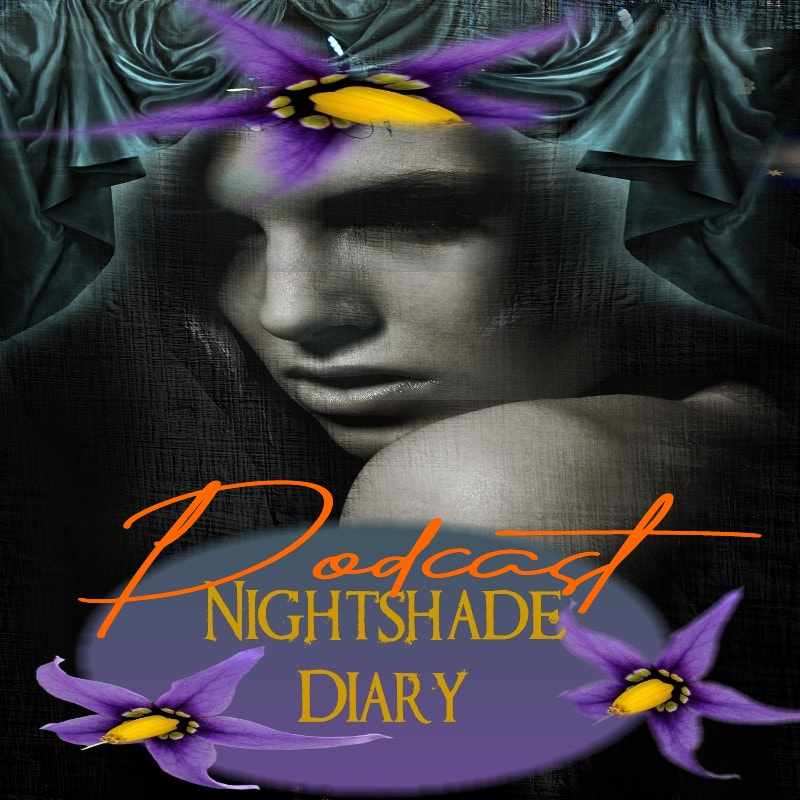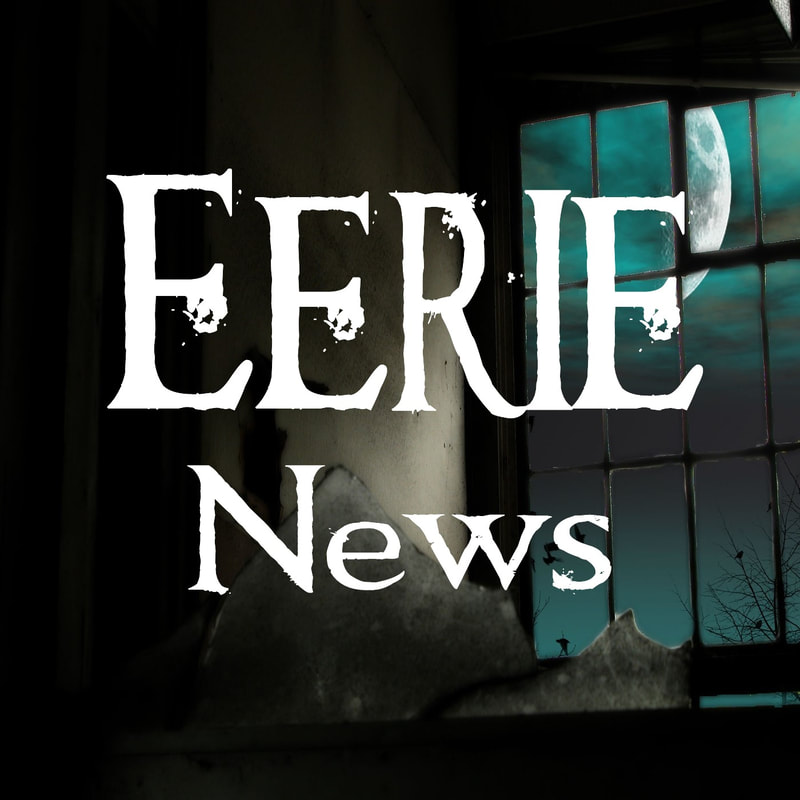 By M.P. Pellicer | Stranger Than Fiction Stories Boleskine House sits on the southeast side of Loch Ness and has a history of death dating back to the 10th century, when according to legend it was built atop the ruins of a Scottish kirk that burnt to the ground with its congregants trapped inside. And this was only the beginning. 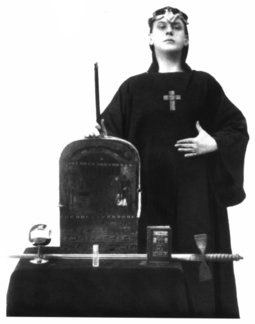 Aleister Crowley in ceremonial garb, c.1912, Aleister Crowley in ceremonial garb, c.1912, The building was constructed in the 1760s by Colonel Archibald Fraser of Lovat (1736-1815) as a hunting lodge at Inverfarigaig, Scotland. The original structure was expanded continuously by the Fraser family until 1830. All the rooms were situated on one floor with 4 bedrooms, a kitchen, lounge, drawing room and a library. It even had a tunnel leading from the cellar to Boleskine Cemetery that sits at the foot of the hill below it. The purpose of the tunnel was perhaps for a grave watcher to alert the master of the house to any body-snatching that took place. Beyond that lies Loch Ness, of Loch Ness Monster fame. The cemetery has long been the site of misdeeds and occult happenings. According to previous owners, the house had "bad vibes". Apparently the executed head of Lord Lovat can be heard rolling around on the floor. He was nicknamed The Old Fox, known for his feuding and changes of allegiance. In 1715, he participated in the Battle of Culloden and was convicted of treason against the Crown. As a Jacobite sympathizer he was sentenced to death and subsequently beheaded. This fueled local legend even before its most notorious resident moved into the house.  Aleister Crowley C.1902 (Source - bridgemanimages) Aleister Crowley C.1902 (Source - bridgemanimages) Aleister Crowley bought Boleskine House from the Fraser family in 1899. The house at that time was known as the Manor of Boleskine and Abertarff, after the name of the local parish. While living there he called himself the Laird of Boleskine. Ironically Crowley who would be dubbed "the Wickedest Man in the World" complained to the local Vigilance Society upon moving to Boleskine House about the following: "Prostitution is most unpleasantly conspicuous." An officer from the society went out in response to his complaint, and found no activity that correlated with what Crowley described. When advised of their findings, he responded, "Conspicuous by its absence, you fools!" It wasn't only seclusion Crowley sought when moving to Boleskine, but probably more room. Before this while living in London, he had two temples erected where he carried out his occult readings. One was white, with six large mirrors, the other was black with "an altar supported by the figure of a black man standing on his hands, and with a human skeleton that Crowley would feed from time to to time with blood, small birds and the like." He said it was to give it life, but all it did was stink and become slimy.  Crowley with his wife Rose and daughter Lola c.1908-1909 Crowley with his wife Rose and daughter Lola c.1908-1909 Crowley went to Boleskine House to seclude himself and perform magic from The Book of Sacred Magic of Abramelin the Mage, a 15th century grimoire written of a Jewish mystical provenance. It was translated by his mentor, founder of the Hermetic Order of the Golden Dawn, Samuel Liddell MacGregor Mathers. This manuscript became central to Thelema his new religion. It was during the time at Boleskine that Crowley became famous for his spiritualism and black magic practices, both around Scotland and later the world. In 1903, he married Rose Skerrett nee Kelly, a widow. In 1904, while living at Boleskine House she gave birth to a daughter they named Nuit Ma Ahathoor Hecate Sappho Jezebel Lilith. In 1906, they traveled to the Far East where Lilith contracted typhus while in Rangoon, Burma and died when she was only two years old. In 1907, they had another daughter they named Lola Zaza, which would eventually be turned over to an uncle, Gerald Kelly to care for her. Rose divorced Crowley in 1909, however he had her committed in 1911 to an asylum for alcohol dementia, since she had been a severe alcoholic for several years. Rose died in 1932.  Lola Zaza, Aleister Crowley's daughter in a Halloween costume c.1910s Lola Zaza, Aleister Crowley's daughter in a Halloween costume c.1910s Gerald Kelly would go on to become a painter of portraits and was knighted. Crowley came to see Lola at her uncle's house in 1922, and despite his attempts at other meetings in the future she refused to see him. She became a governess, married Frank Hill on June 9, 1934 in London, and had a daughter named Elizabeth. Little else is known about Lola's life; she died on March 9, 1990, age. 84. Sometime during this period, Mathers called Crowley to the Hermetic Order of the Golden Dawn in Paris. He left without dispelling the "12 Kings and Dukes of Hell" he had summoned at Boleskine House, and many locals blame the house’s unlucky history on evil spirits left behind. Crowley himself, never one to admit a mistake, even conceded that the rituals he had performed had gotten out of hand. Crowley described some of the odd effects the ritual was having on the property as it was performed: One day I came back from shooting rabbits on the hill and found a Catholic priest in my study. He had come to tell me that my lodgekeeper, a total abstainer for twenty years, had been raving drunk for three days and had tried to kill his wife and children. I got an old Cambridge acquaintance to take Rosher’s place; but he too began to show symptoms of panic fear. 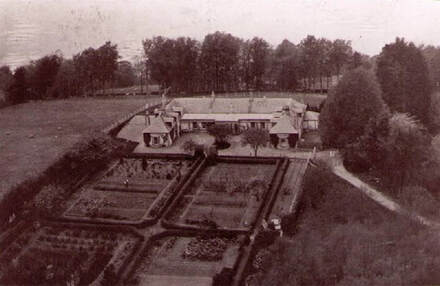 Boleskine House overlooks Loch Ness Boleskine House overlooks Loch Ness Crowley’s housekeeper, Hugh Gillie lost his 10-year-old daughter, and 1-year-old son who died mysteriously and abruptly. Crowley even tells of a local man he had hired for general labor going mad and attempting to kill him, and a local butcher accidentally cutting off his own hand while reading one of Cowley’s notes. Despite these “clear signs”, Crowley continued to work on the ritual, going so far as to deny visits from friends for fear of their safety. Shortly after Crowley left for Paris, the locals began to murmur about the dark black clouds hanging in the skies around the Boleskine House; many residents going far out of their way to avoid traveling near the building. Upon his return to Boleskine, Crowley immediately felt the changes in his estate; even his protégé had fled the property while he was gone. He again, went to his diary: Besides these comparatively explicable effects on human minds, there were numberless physical phenomena for which it is hard to account. While I was preparing the talismans, squares of vellum inscribed in Indian ink, a task which I undertook in the sunniest room in the house, I had to use artificial light even on the brightest days. It was a darkness which might almost be felt. The lodge and terrace, moreover, soon became peopled with shadowy shapes, sufficiently substantial, as a rule, to be almost opaque. I say shapes; and yet the truth is that they were no shapes properly speaking. The phenomenon is hard to describe. It was as if the faculty of vision suffered some interference; as if the objects of vision were not properly objects at all. It was as if they belonged to an order of matter which affected the sight without informing it. 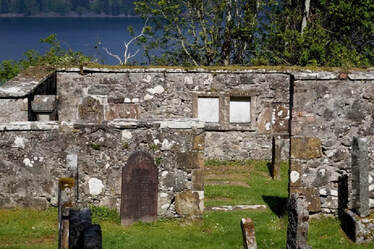 Boleskine Cemetery with remnants of medieval church, Loch Ness in the background c.2019 (Source - MyPlaidHeart) Boleskine Cemetery with remnants of medieval church, Loch Ness in the background c.2019 (Source - MyPlaidHeart) Crowley spent little time at the house, instead leaving shortly for New York, and then Egypt, where he would again attempt to contact his Holy Guardian Angel, this time claiming success. He sold Boleskine House in 1913, and moved to the United States. He never returned to the property. By 1920, along with some followers he established a temple of Thelema in a farmhouse in Cefalu, Sicily. Stories of orgies and animal sacrifice were published by the press. Raoul Loveday aka Frederick Charles Loveday (1900-1923) born in Rangoon, Burma attended St. John's College, Oxford where he studied history. This is where his interest in the occult began, and he became a member of the Hypocrites' Club. In 1922, he married Betty May, a widow and divorcee who frequently used drugs, mostly cocaine. Her first husband had died from an overdose, and her second husband divorced her because of her addiction. When Loveday met Crowley through a friend, he stayed three days with Crowley taking ether. Betty had already met Crowley in 1914, and was unimpressed with him, her husband though became enthralled with Crowley. 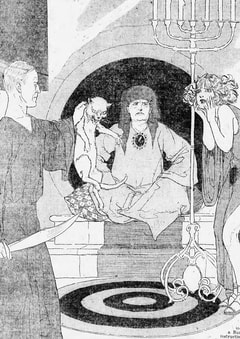 Illustration of the cult activities at the Abbey in Cefalu c.1923 Illustration of the cult activities at the Abbey in Cefalu c.1923 The couple joined Crowley in Cefalu in November, 1922. In February, 1923 Loveday suffered from a bout of malaria. He developed acute enteritis as a result of drinking polluted water, and he died on February 16. He was buried on the 23rd outside the Catholic cemetery in non-consecrated ground. His parents later had the body exhumed and reburied in England. Betty May Loveday returned to Britain and told the press that Loveday was made to drink the blood of a sacrificed cat, and that they were required to cut themselves with razors every time they used the pronoun "I". She described what happened at the Love Cult Abbey thus: "My husband, trembling from head to foot, stood by the altar, armed with a sharp, curved sword. The cat struggled violently. Crowley dabbed its nose with ether until it became quiet. 'Now!' said the Beast. My husband struck at the wretched animal, and finally, with a hard blow, severed its head from its body." Benito Mussolini learned of Crowley's activities, and in April 1923, he was given a deportation notice forcing him to leave Italy; without him, the Abbey closed. 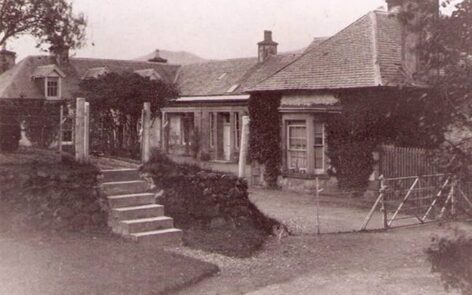 Even after Crowley left, Boleskine House seemed haunted by the rituals he performed there Even after Crowley left, Boleskine House seemed haunted by the rituals he performed there In 1934, Crowley was declared bankrupt after attempting to sue an artist who called him a black magician. Addressing the jury, the judge said that in all his years in law, he had “never heard such dreadful, horrible, blasphemous and abominable stuff as that which has been produced by the man (Crowley) who describes himself… as the greatest living poet.” In the decade that followed, Crowley became addicted to heroine, and died of a respiratory infection at the age of 72. His nurse and another witness reported his last words to be, "Sometimes I hate myself." The Boleskine House then changed hands many times, however it still wasn’t free of dark energy. The various owners all reporting strings of terrible luck. In 1955, Kenneth Anger an occultist along with sexologist Alfred Kinsey visited the Abbey in Cefalu. He photographed what was left of the erotic murals on the walls. The surrounding community who feared a revival of the dark rituals performed by Crowley, left a mutilated cat on the doorstep of the farmhouse. Kenneth Anger had become familiar with Thelemic teachings since the 1940s, when he was introduced to them by Marjorie Cameron. She along with rocket engineer, Jack Parsons were part of Crowley's OTO. During this time Parsons was a close associate of L. Ron Hubbard, the founder of Scientology. In 1960, Major Edward Grant, a retired Army Major committed suicide in Crowley’s old bedroom using a shotgun. Anna MacLaren, his former house-keeper, described the scene: When I came up, and went in the front door there was this little bone at the front door, and they had this little doggie, Pickiwig was his name. And I said, ‘where did you get that, Pickiwig,’ because they had this huge fridge and there was nothing in it. I took the bone and I just threw it. I went to look and there (the Army Major) was in front of the big mirror and his head off. So, I was so scared that I did run.. quite a distance.. and I said, ‘the Major’s shot himself!’ Anyway, the detectives, I told the detectives this, and (they said) the bone was of his skull. 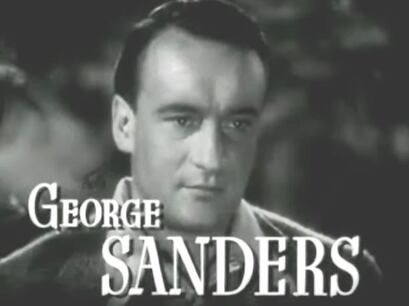 George Sanders starred in many movies produced during the Golden Age of Hollywood George Sanders starred in many movies produced during the Golden Age of Hollywood In 1962, Dennis H. Lorraine a British film producer bought Boleskine House. He got actor, George Sanders involved as an investor in a fraudulent company called Cadco that would produce sausages from hogs raised at Boleskine. The hog farm never materialized, and eventually Sanders had to declare bankruptcy in 1966. It became known as The Great Sausage Scandal. In 1965, Lorraine was sentenced to six years in prison and a $10,000 fine for his part in an international counterfeiting scheme. Dennis Lorraine had supposedly bought Boleskine House after his wife Molly came across information about Mary Lorraine (no relation to them), who had been married to Major Grant who committed suicide prior to their ownership. For some reason this intrigued her. The Lorraines both descended into alcoholism, and eventually they parted ways. Dennis spent his last years living in London and destitute. He supposedly slept with a gun under his pillow. Ironically George Sander's last film, Psychomania (1973), was about a psychopathic biker who belonged to a gang known as the The Living Dead, who in order to achieve immortality makes a deal with the devil. In the U.S. it was released as The Death Wheelers. . In 1937, George Sanders told David Niven that he would commit suicide when he got older. He was found dead in a hotel in Barcelona, Spain in 1972, having overdosed on 5 vials of Nembutal. He left a suicide note saying, “Dear World, I am leaving because I am bored. I feel I have lived long enough. I am leaving you with your worries in this sweet cesspool. Good luck.” According to Niven's memoirs, he said Sanders told him specifically that he would kill himself from a barbiturate overdose when he reach the age of 65. 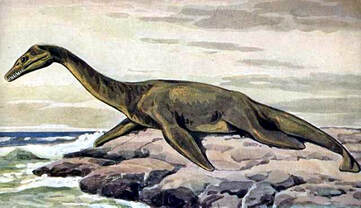 Was the appearance of the Loch Ness monster tied to the rituals Crowley performed at Boleskine House? Was the appearance of the Loch Ness monster tied to the rituals Crowley performed at Boleskine House? Is the Loch Ness monster supernatural in origin? This kind of strangeness went on for years, leading believers of the mystical and the occult to believe that the house had become a sort of portal, the unfinished ceremony leaving an open gateway to worlds unknown, spreading the activity from beyond the confines of the house itself, and into the surrounding area. Strangely enough, the first recorded appearance of the Loch Ness Monster coincides with the beginning of the end of Crowley’s legacy. Frederick William Holiday, one of the most well-publicized Loch Ness monster investigators, having published two books dedicated to the search for the creature, made an assessment in the 70’s that the monster acted itself much like a supernatural creature, leading him to re-think his stance on it’s origin. Instead, Holiday postulated that the creature’s apparent self-concealing phenomena was evidence that it could possibly be related to the aftermath of Crowley’s preternatural mistakes 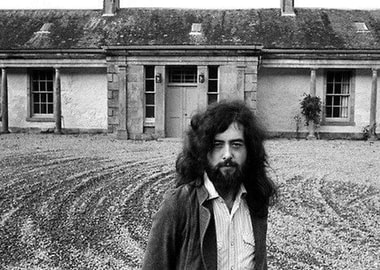 Jimmy Page guitarist for Led Zeppelin in front of Boleskine House Jimmy Page guitarist for Led Zeppelin in front of Boleskine House Kenneth Anger visited Boleskine House and rented it for a few months in the 1960s while he worked on his film Lucifer Rising. It was during this time that he met Jimmy Page at a Sotheby auction where they were both bidding on a Crowley manuscript. Their friendship ended over an argument over the soundtrack Page was producing for Anger's film. The paranormal happenings in the house did not cease after Crowley’s death. In fact, word of the Boleskine House’s notoriety began to spread like wildfire. One of Crowley’s most famous admirers, Led Zeppelin guitarist and occult enthusiast Jimmy Page, purchased the house in 1971, knowing the importance the property had played in the formative years of the magician’s career. In 1974, he commissioned artist and satanist Charles Pace to recreate the murals from Crowley’s Abbey of Thelema in Sicily. Since the 1960s, Pace was a member of a number of underground satanic and luciferian covens. He was interested in dark Egyptian magick, and his grimoire was known as the Necronomicon. Author Michael Ford borrowed the title for one of his own books. In 1975, he gave an interview to Rolling Stone Magazine where he described some of the "bad vibes" he got from the building thus: ...there were two or three owners before Crowley moved into it. It was also a church that was burned to the ground with the congregation in it. And that’s the site of the house. Strange things have happened in that house that had nothing to do with Crowley. The bad vibes were already there. A man was beheaded there and sometimes you can hear his head rolling down. I haven’t actually heard it, but a friend of mine, who is extremely straight and doesn’t know anything about anything like that at all, heard it. He thought it was the cats bungling about. I wasn’t there at the time, but he told the help, “Why don’t you let the cats out at night? They make a terrible racket, rolling about in the halls.” And they said, ‘The cats are locked in a room every night.' Then they told him the story of the house. So that sort of thing was there before Crowley got there. Of course, after Crowley there have been suicides, people carted off to mental hospitals...”  Boleskine House after fire Boleskine House after fire When the interviewer went on to clarify that Page himself never had contact with the spirits, Page cut in with, "I didn’t say that. I just said I didn’t hear the head roll." He went on to tell the interviewer that he preferred not to discuss the issue further. Scenes from the Led Zeppelin film The Song Remains the Same were filmed in the grounds. John Bonham the drummer for the band, and a heavy drinker died in 1980, after he asphyxiated from vomit. Led Zeppelin disbanded after his death. Singer Graham Bond like the unfortunate Loveday decades before, became enthralled with Thelema and even claimed Crowley was his biological father. Like others who hitched their wagon to Crowley's dark teachings, his end was brutal and violent. He threw himself in front of a train at Finsbury Park Station in 1974. Though never actually residing in the building for long periods of time, Jimmy Page instead had it occupied by a long time school friend by the name of Malcom Dent that acted as a caretaker. Malcom described the living situation as a constant and "definite feeling of a strong presence trying to get into you." There were strange occurrences and noises in the house throughout their tenure. He described what was "the most terrifying night of my life" when he awoke by what sounded like an animal snorting outside his bedroom door. Bravely he opened it, only to find nothing was there, but he said, "whatever was there was very, very evil. And I was very, very frightened." Perhaps to minimize the fear, Dent said, "We just used to say that it was Aleister doing his thing." Another friend who stayed a night at the house awoke and claimed she'd been attacked by "some kind of devil." Was this based on a true experience, or someone primed by the history of the house to imagine an encounter with something otherworldly? Despite this weird environment, Malcom lived and raised a family in the house, while simultaneously ignoring as much of the strange activity as possible. He also fended off the weirder groups of Crowley devotees, who would creep onto the property at all hours of the night. He left the house in 1992, when Jimmy Page sold it. 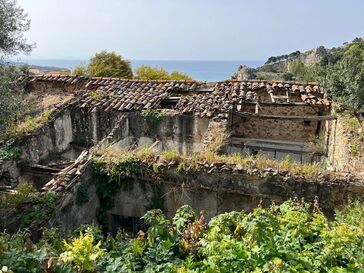 As of 2010 the Abbey in Cefalu was up for sale for 1.5 Million Euro. There are currently no reported buyers As of 2010 the Abbey in Cefalu was up for sale for 1.5 Million Euro. There are currently no reported buyers In a 2006, in an interview with the Inverness Courier Mr. Dent who died in 2011, said he and his wife and children had loved living there, despite the "curious" goings on. He described himself as a skeptic, but said there were things at Boleskine that could not be explained. He said: "Doors would be slamming all night, you’d go into a room and carpets and rugs would be piled up." For a time it was used as a bed and breakfast. Either the strange occurrences in the building settled, or the latest batch of property owners decided to keep quiet about the activity. Likewise, the sightings of the Loch Ness Monster dwindled to very few since their heyday in the 1900’s. But what if, as Holiday thought, the Monster in the loch was a different kind of monster completely? Could the legendary creature have been a consequence of Crowley’s failure to properly end the ritual he had started? Later owners dismissed any notions of a haunting or witchcraft at the house, but tragedy continued to strike. In 2015, the residents of the house returned from a shopping trip to find the house completely in flames. There were no injuries as the house was totally empty, when it ignited. It was never determined if the fire was an act of arson. In 2018, Boleskine was placed on the Buildings at Risk Register for Scotland. Highland Paranormal, a research group completed an investigation on the grounds, but didn't find evidence of any supernatural occurrence. The Daily Express interviewed Trudy Piekaar-Bakker the owner in 2018. She complained of looters and trespassers, including a weird squatter named Mordechai Moshe, who had to be removed by police. The ruins of the building were put on the market in April, 2019. It was purchased by Kyra and Keith Readdy. Keith is the author of the book, One Truth and One Spirit: Aleister Crowley’s Spiritual Legacy. They set up the Boleskine House Foundation as a charitable trust. Three months later a fire swept through it, believed to be the work of an arsonist. The roof of the house collapsed. In 2020, supposedly the new owners were selling bags of charred ruins on eBay for £49 each. This was to raise money for a spiritual center to be established at Boleskine House. In 2022, filmmaker Ashley Cowie announced the production of a film titled The Beast of Loch Ness, which was to set the record straight about Crowley and the other strange stories attached to the property. By August 2023, the film was released to 20 international film festivals, and the renovations on Boleskine House continues.  Louise (1920-2014) Crowley's unknown daughter as a young woman Louise (1920-2014) Crowley's unknown daughter as a young woman During his time in Cefalu, Crowley fathered other children. With Leah Hirsig he had daughter Anna Leah (1920-1920) who died of unknown causes when she was 8 months old. This same year he had another daughter with a Frenchwoman named Augustine "Isabella" Shumway née Fraux (1894-1989). Their daughter Louise (named Lulu Astarte Panthea by her parents), used her mother's married surname of Shumway, and her identity as Crowley's daughter remained hidden until after her death in 2014. When she was ten years old she came to the United States and was raised by her maternal aunt, after the Fraux family had emigrated to California. She became a school teacher, married Virgil Muhler and had several children. She was a member of the local Presbyterian Church for 50 years. Source - Atlas Obscura, Week In Weird
0 Comments
Your comment will be posted after it is approved.
Leave a Reply. |
Stranger Than Fiction StoriesM.P. PellicerAuthor, Narrator and Producer Archives
July 2024
Categories
All
|
Stories of the Supernatural
- Stories of the Supernatural
- Miami Ghost Chronicles
- M.P. Pellicer | Author
- Stranger Than Fiction Stories
- Eerie News
- Supernatural Storytime
-
Astrology Today
- Tarot
- Horoscope
- Zodiac
-
Haunted Places
- Animal Hauntings
- Belleview Biltmore Hotel
- Bobby Mackey's Honky Tonk
- Brookdale Lodge
- Chacachacare Island
- Coral Castle
- Drayton Hall Plantation
- Jonathan Dickinson State Park
- Kreischer Mansion
- Miami Biltmore Hotel
- Miami Forgotten Properties
- Myrtles Plantation
- Pinewood Cemetery
- Rolling Hills Asylum
- St. Ann's Retreat
- Stranahan Cromartie House
- The Devil Tree
- Trans-Allegheny Lunatic Asylum
- West Virginia Penitentiary
- Paranormal Podcasts
"When misguided public opinion honors what is despicable and despises what is honorable, punishes virtue and rewards vice, encourages what is harmful and discourages what is useful, applauds falsehood and smothers truth under indifference or insult, a nation turns its back on progress and can be restored only by the terrible lessons of catastrophe."
- Frederic Bastiat
- Frederic Bastiat

Copyright © 2009-2024 Eleventh Hour LLC. All Rights Reserved ®
DISCLAIMER
DISCLAIMER



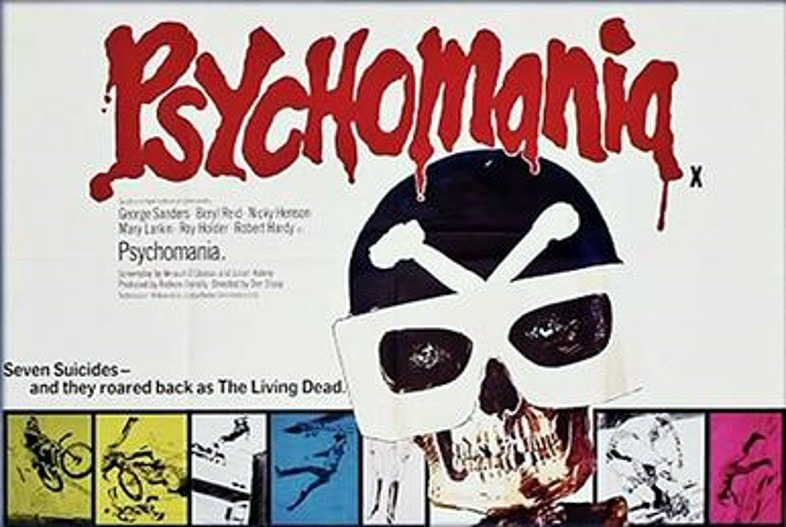
 RSS Feed
RSS Feed


